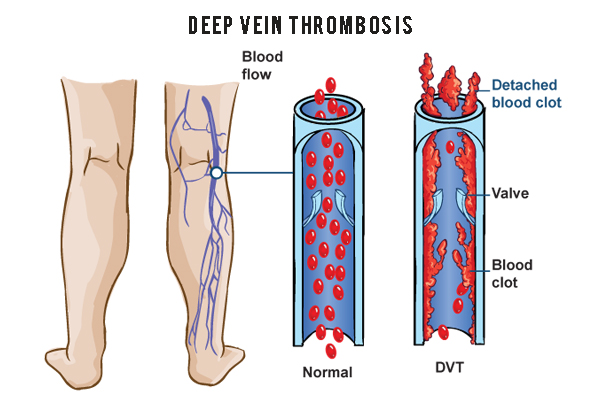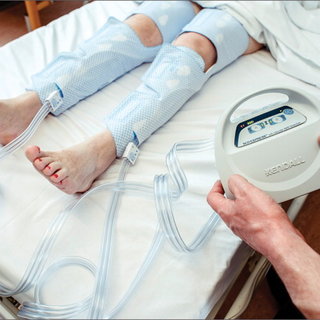Why DVT in Needed Hospitals and Facilities for Your Patients
 A thrombus is a blood clot. Thrombosis is the formation of a blood clot in any part of the circulatory system. The clot may block a blood vessel, causing potentially serious health effects.
A thrombus is a blood clot. Thrombosis is the formation of a blood clot in any part of the circulatory system. The clot may block a blood vessel, causing potentially serious health effects.
A deep vein thrombosis (DVT) is a blood clot that forms in the deep veins of the leg. A deep vein thrombosis in the thigh carries a risk of pulmonary embolism (PE).
This occurs when the clot loses its attachment to the inside of the vein, leaves the leg, and lodges in the pulmonary artery, the main blood vessel to the lungs. If the clot is large enough, it can completely block that artery and cause death.
Blood flow through the leg veins generally requires some mechanical help, since it has to be pumped up to the heart. When there is a lot of non-movement then the body needs help to pump the blood to the heart. DVT will be working calf muscles and act as a pump for the blood. The contracting muscles compress the veins and force the blood in these veins upwards to the heart.
What Causes the Blood Clots and the Blood Flow to Slow?
Blood clots can form in your body's deep veins if:
Who is at risk of Deep Vein Thrombosis or DVT?
How does DVT affect Surgical Patients?
Those who have major orthopedic surgery, which includes but is not limited to total hip replacement, total knee replacement, or hip fracture surgery are at a high risk of DVT. DVT is very serious in the 35 days after surgery and is elevated in this time. If a patient were non-mobile for long periods of time then they would need DVT.
What is a SCD?
 A Sequential Compression Device is a safe non-invasive therapy for the treatment of DVT. The SCD sleeve is wrapped around the calf muscle and provides a gentle compression or squeeze to promote the flow of blood back to your heart. The Sequential Compression keeps the blood moving and helps to prevent it from clotting. The SCD mimics the contraction of the calf during walking. The units are to be used while resting or in bed. At Best Medical Solutions we provide SCD’s for the post-operative prevention of DVT. We offer several different programs including SCD’s for use in the hospital and surgery center and for patients to take home during recovery.
A Sequential Compression Device is a safe non-invasive therapy for the treatment of DVT. The SCD sleeve is wrapped around the calf muscle and provides a gentle compression or squeeze to promote the flow of blood back to your heart. The Sequential Compression keeps the blood moving and helps to prevent it from clotting. The SCD mimics the contraction of the calf during walking. The units are to be used while resting or in bed. At Best Medical Solutions we provide SCD’s for the post-operative prevention of DVT. We offer several different programs including SCD’s for use in the hospital and surgery center and for patients to take home during recovery.
The use of SCD for the prevention of DVT is covered by most insurances as a post-operative take-home therapy. If you or your doctor would like to use an SCD after your surgery please contact us prior to your surgery. We will make arrangements to have an SCD solution for you. We follow all doctors Prescriptions and instructions. We also follow all manufacturers ' recommendations and rules.